In many Cape Cod fishing spots, you know if striped bass are being caught. That's because during the summer, certain Cape Cod fishing areas get so busy that a crowd of anglers (or a fleet of boats) can develop.
In these instances, you can easily see when someone's rod bends over. If the fish are aggressive, you can learn how to catch striped bass by simply observing what other folks are doing.
Yet often times just one or two boats catch fish, while everyone else in the fleet gets skunked. The question then is, what in the world are those one or two boats doing differently than everyone else?
The rest of this post will help to answer that question. I've also included some personal stories and additional resources to help you become a better striped bass angler.
Please read below to discover more!
My First "Skunking"
I was first exposed to this agonizingly frustrating situation fishing Cape Cod Bay for mackerel when I was in middle school. My father and I were jigging with Christmas Tree Rigs from our 12 foot aluminum boat, smack dab in the middle of the mackerel fleet.
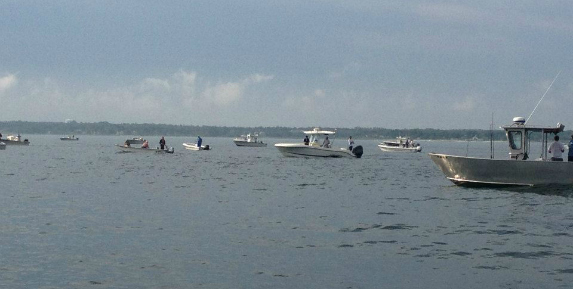
The boats around us were pulling up full stringers, catching dozens of mackerel, while we sat there catching absolutely nothing. Never before had we struggled so much to catch mackerel. We jigged for hours and finally caught one mackerel, which we foul hooked in the belly.
What in the world were we doing wrong?
This bugged my father and I for quite some time. We were tormented by not being able to catch fish like the other boats. Seeing those guys catching mackerel so effortlessly, right there in plain sight, was the reason we could not let this one go. I think if you see someone else who has what you want, you end up wanting to have it so much more. As a 13 year old I felt a strong desire to figure it out, but had no idea where to turn for an answer.
While working at a bait shop a year or so later, someone told me to always pack a few Sabiki Rigs if there are mackerel around. He said something along the lines of; "Sabikis will catch them when the Christmas Trees don't." Within 10 seconds this stranger had solved the mystery that had haunted my father and I for over a year. I never left the dock again without Sabiki rigs.
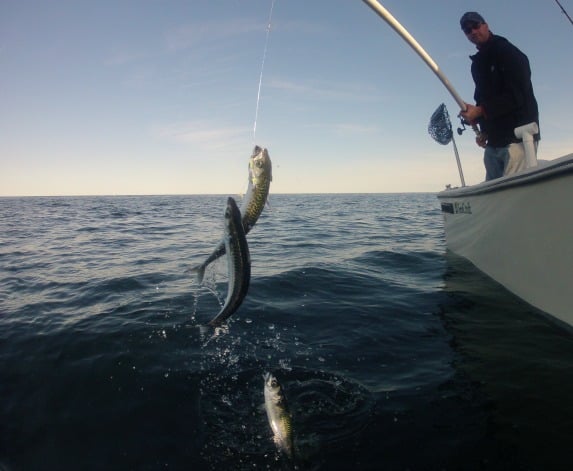
I think the same sort of scenario holds true in many Cape Cod striped bass fishing situations. One or two boats "in the know" catch the most fish, while everyone else gets skunked. Have no worries if you continually find yourself on the short end of the stick. We have all been there. The skunk comes aboard even the best anglers' boats from time to time.
The good news is that if you pay attention to a few small details, you can learn how to catch striped bass in these difficult situations, and avoid the dreaded skunk.
Read on to increase your odds of being that one boat with the bent rods.
Lockjaw Striped Bass
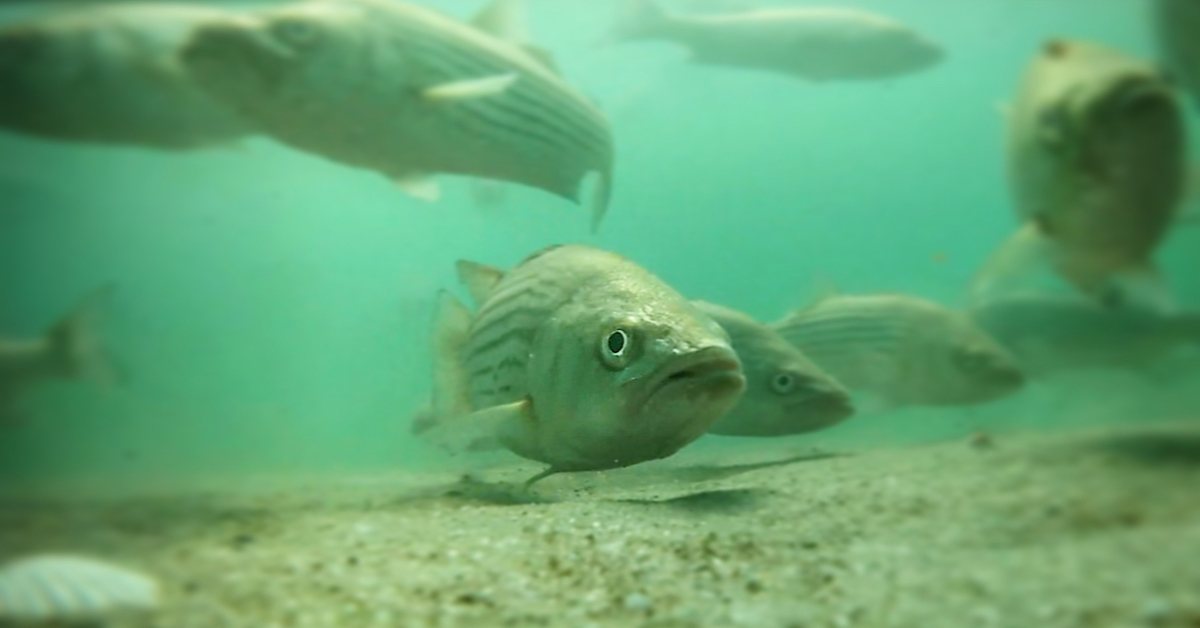
My first encounter with lockjaw striped bass occurred one clear summer night under a bright full moon. It was July and we were the only boat for miles, trolling along ontop glass calm water. The night was so bright, calm and clear that you could see the small waves created by our 2 mph troll extending all the way off into the distance towards the shore and open ocean. A moth landed on our boat's canvas before fluttering off into the distance - it was one of those nights.
That night we found fish and a lot of them. We trolled for one half of a mile, marking bass the entire time. By the look of the solid orange marks on the sonar these stripers were all over 25 pounds. Every few moments we would mark another bass. Then on the sonar came an enormous blob of orange and red. It was a massive school of hundreds of stripers, piled one ontop of the other. We trolled right through the center of them without so much as a sniff.
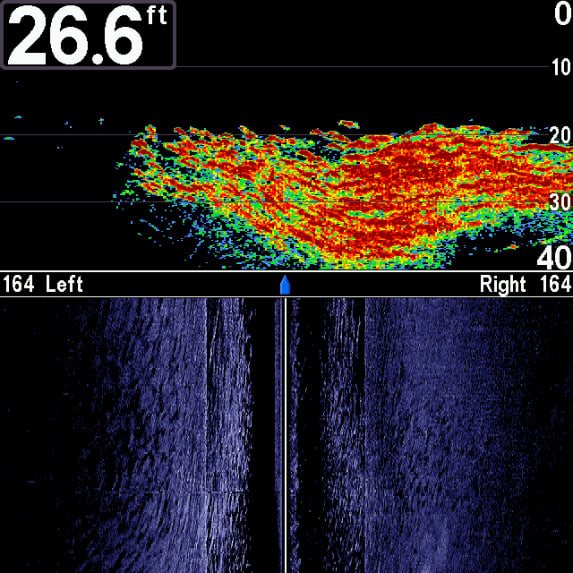
In the upper half of this snapshot is a school of bass on the regular sonar. Below is the same school on the sidescan, marking on both the port and starboard.
My father and I were amazed by the amount of fish, but we were utterly shocked that we did not even register a bite. Our offerings had passed by hundreds of striped bass, literally right in front of their noses. "What hell is going on?" I remember thinking. For the next couple of hours I tried every tube, spoon, swimmer and jig I had onboard my boat the Miss Loretta. I cast plugs and rubbers off into the crystal clear night and waited for a strike that would never come. My father and I were bamboozled.
This same scenario has occurred countless times since that evening, which has provided me with many opportunities to experiment. Most of the experiments have resulted in nothing, but I have learned a few things that at least make not catching much more bearable.
Striped Bass Need Sleep Too
I believe that striped bass are resting when they are in lockjaw mode. Striped bass need sleep too - just like any other animal. In my experience, bass are more apt to rest during the summer months on Cape Cod. The hottest months of July and August have always produced more schools of lockjaw bass than May, June, September and October combined.
Off Cape Cod during July and August, schools of bass will often settle into particular areas day after day. Contrast this to the spring or fall when a biomass of stripers moves into an area for just a day or two before migrating on. Because the same fish are "sitting" in the same general area, you can really tune into how they behave if you spend enough time on the water.
For the most part, if I encounter a large school of striped bass that has lockjaw, then most other bass in the area will also have lockjaw. It seems as if entire schools enter lockjaw mode simultaneously. On the flip side if one school of bass is aggressive, then odds are the other striped bass in the area will also be aggressive. Of course there are those days when one school seems to be feeding, while other schools are resting. I'll be the first to admit that I definitely do not have Mother Nature figured out, and it's these days that bring me back down to reality.
How To Catch "Lockjaw" Stripers
After much trial and error, I've found that trolling the tube and worm gives me my best chance at catching lockjaw striped bass. If you agree that a tube and worm rig imitates a large sandworm wriggling through the water, then it makes sense that a tube would be a good choice for when bass are in lockjaw mode. From a striped bass' perspective, a large sandworm moving at a snails pace through the water column is about as easy as it gets.
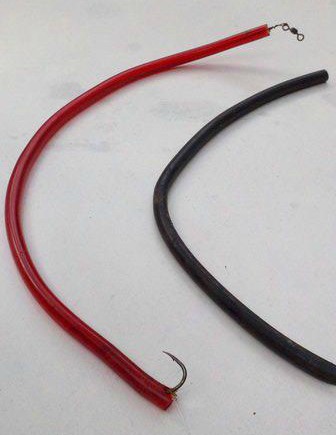
Another method which probably works even better at fooling finicky bass than the tube and worm would be yo-yoing pogies. However, I would probably tick off a lot of people if I wrote about the details of yo-yoing. What I will say is that yo-yoing a pogie basically accomplishes the same thing as trolling a tube and worm. When you yo-yo a pogie, you are literally placing a baitfish smack dab in front of a striper. For the bass, it just doesn't get any easier, and it's often hard for even "half asleep" stripers to resist.
Lethargic and sleepy stripers will bite a tube and worm rig in a very lazy fashion. Often times these bass are so lazy, that they seem to barely realize that they are hooked. A lockjaw 35 pound striper will often times fight less than a 10 pound aggressive bass. There have been many instances which I believed I had hooked a dogfish, until I got the fish next to the boat and realized that I had a really nice bass on the line. More often than not these lethargic stripers are barely hooked, which indicates that they half-heartedly "nipped" at the tube as opposed to aggressively sucking the tube down.
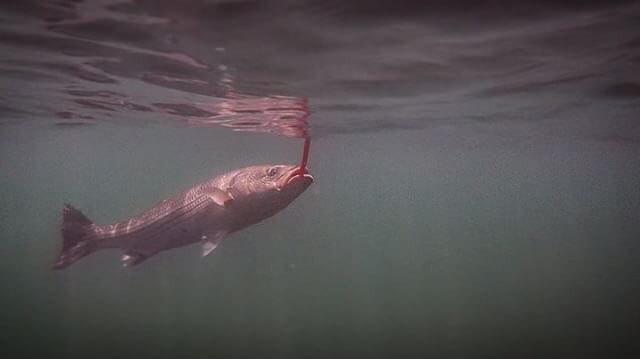
However, catching lockjaw bass on the tube is not as simple and straightforward as it may seem. When bass are extremely lazy, what you'll see are many boats trolling tubes directly through the center of enormous schools of bass without registering a single bite. The radio chatter will be along the lines of "I knocked 'em over the head with the tube without a sniff" or "we're marking bass but all we're catching are bluefish."
You need to take your tube and worm trolling to a new level if you want to start catching lazy, lethargic, lockjaw summertime stripers. The main concept to understand with the tube is that the smallest most minute change can make a world of a difference. If you troll through a school of lockjaw striped bass with a tube and don't get bit, resist chalking it up to chance and continuing trolling on as you were. I recommend making changes, and plenty of them, until you zone in on exactly the type of tube presentation the bass want.
Make Minor Changes To Fool Finicky Stripers
In the following paragraphs, I'm going to use the tube and worm as an example, but you could apply these concepts to any lure or bait. The takeaway is that often the solution to triggering a bite is to make minor changes to your technique. Oftentimes you might not think such a small change will have such an impact, but if often does.
Unless I need to dredge tubes on the bottom in 40 or more feet of water, I prefer to use weightless tubes because it makes it easier to precisely control the depth at which the tubes are fishing. This is important because even the slightest change in depth can be the difference in catching and not catching striped bass. There have been many trips that the tube that was set at 4.75 colors was the only tube that caught fish. Tubes set at 4 or 5 colors did not get bit.
Leadcore line works great when it comes to precise depth control. I recommend spooling all your trolling reels up with the same brand name leadcore and same pound test leadcore. To make life easier, try to spool up with leadcore that is marked exactly the same color wise. This will make it easier to remember exactly how many colors that last bass bit on, which is important when you are sleep deprived and have been on the water all day.
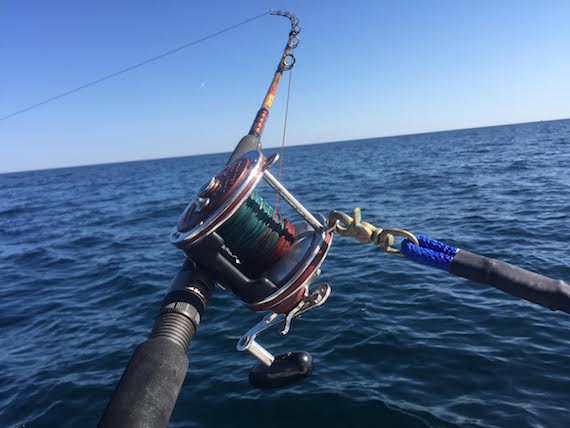
The way a tube moves is arguably the most important factor to tube and worm success, at least from what I've observed. I think action is much more important than say, color of the tube. Pay close attention to the action of the tube that is producing bites. This is important for aggressive bass, but even more important for lockjaw stripers.
For example I've had trips in the past where all the fish were taken on one particular tube that moved in one certain way. All tubes trolled during these trips were the same color, and trolled at the same depth. The only thing I could think of that was different was the action. Pay close attention to whether your tube is moving clockwise or counterclockwise. Is the tube moving forward in a tight spiral? Is it barely spiraling at all?
Sometimes a tube that moves straight through the water, with virtually no spin, is exactly what the bass want.
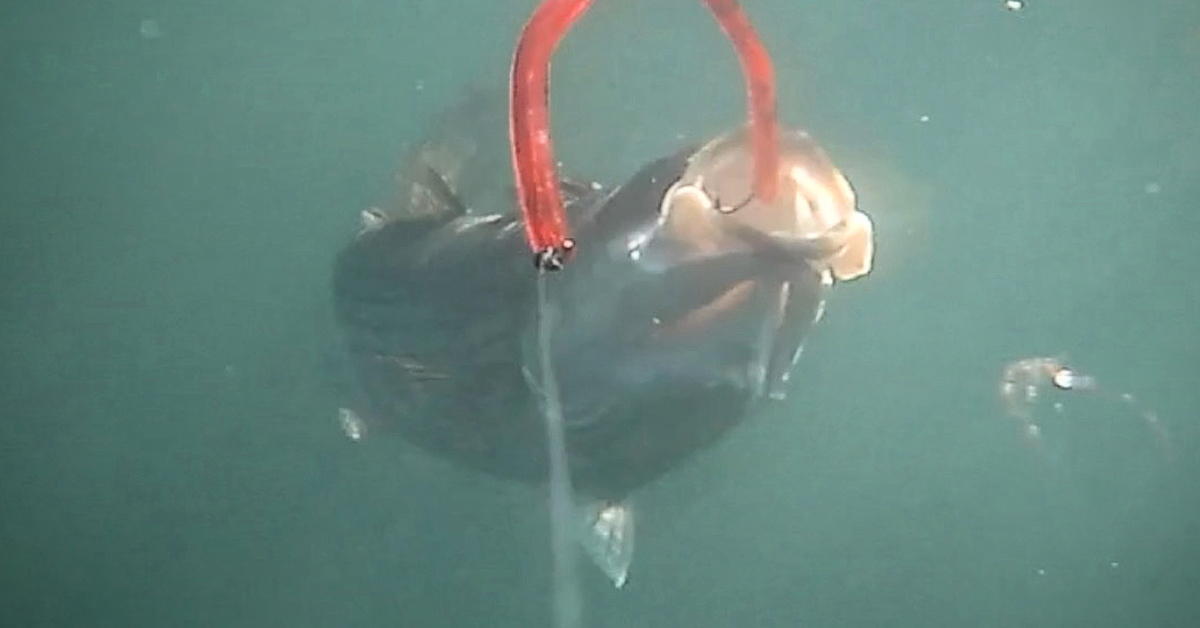
Most tube and worm articles will recommend that you troll the tube "low and slow." Dredging a tube right along the bottom certainly works, but if you're trolling your tubes through schools of fish without registering a single bite, then try doing the exact opposite.
If you think about it, trolling a tube directly above the level at which bass are holding makes perfectly good sense. Because the tube is above the bass, it will create a nice silhouette that is very visible to the fish - I believe more visible than a tube that is trolled at the same level or below the level at which the fish are holding.
For example, a common scenario I encounter are bass suspended at say 25 feet. Instead of trolling 5 1/2 colors which will put the tubes right at 25 feet - I'll go with trolling 4 1/2 colors which will put the tubes 5 or so feet above the bass. In past trips we have trolled as little as 1.5 colors. When you troll a tube at 1.5 colors you are pretty much trolling the tube 5 or so feet beneath the surface. For whatever reason 1.5 colors was the ticket during that particular trip, as it dramatically outproduced a tube trolled at the same level of the fish.
What I usually do is start by trolling tubes directly smack dab through the school. If that doesn't work I'll troll one tube directly above, one right in the middle, and another below. From there it's just a process of elimination and continuous tweaking until you zone in on what works.
Catch More Striped Bass by Making Minor Tweaks
The most important thing to take away from this post is to continually be making tweaks to your approach until you focus in on exactly what the fish want most. This is particularly true during those days when most folks are getting skunked. The one thing the "guys in the know" do that most folks don't do, is that they continually alter their striped bass fishing technique until they match the exact thing that the bass want.
This is true whether you are tube and worm trolling off Wellfleet, or wire-line jigging off Chatham. It's these small adjustments that will propel you to the top of the fleet. That boat with the bent rods may be using the same exact lure, in the same exact spot as you. However they are doing one seemingly minuscule thing that makes all the difference.
Have you ever encountered lockjaw bass of your own?
If so I'd love to hear about in a comment below. It's good to know that I am not the only one that has been frustrated in the past by fish that refuse to cooperate!
Tight lines





Hey Ryan,
Great article, thank you. Last year I booked a charter with Captain Steve Miller aboard his boat “Storm Petral”off of Block Island. I had a great trip with several bass up to 35 pounds.
We discussed his methods which were not always what I expected. Steve has developed these methods over time by what catches fish and what doesn’t. The large transparent orange tubes that he trolls are always wound in a loose overhand knot when stored. This maintains their curly Q shape that Steve believes is crucial to their success.
The rod holders on “Storm Petral” hold the rods parallel to the water. This keeps the tubes outside of the boats wake which a vertical rod holder will not do. It is important to use a rod leash for if a fish hits as the boat takes a turn the inside rod can be pulled out.
Steve always trolls with the current, not against it. He also checks the tubes often as any weed will make them ineffective. What I found most unusual was that he doesn’t put a worm on the tube. He feels it doesn’t make any difference and our results seemed to bear this out.
His last unusual practice was the torpedo release usually reserved for Albies. Steve releases thousands of bass this way each season. He has only had to return once or twice to further revive a fish. I recently used this technique with several large fish during a surf casting trip to Cuttyhunk and they all swam away strong. It is important to hold the fish horizontally while supporting it from the mouth and underneath the body. Then toss it so that the mouth enters the water first which pushes a rush of water through the gills.
Dex
Great comment Dex, thank you!
Thank you Ryan for this great article!
My pleasure! Glad you enjoyed it.
Hey Ryan, love the article and I can REALLY identify with all of the content, especially not catching when others are! In your section discussing tube and worm, you are absolutely right about a fish being big but with little to no fight. I caught a 39.5 in bass from Narragansett bay near the aircraft carrier on tube and worm. As I was pulling him in I thougt it was a small branch or something. NO fight, just like a small dead weight. When he got close I was shocked at his girth. So yeah, love your postings and tips. Keep it up! (
Hi Jamie,
That is great to hear – thanks! I think most folks who are reading this very comment, can probably relate to not being able to catch anything when others are. We’ve all been stuck in that boat, that is for sure.
Your story about that 39.5 incher is right on the money. Your account sounds very similar to what I have experienced over the years. They just don’t have as much gusto when they are in resting/lockjaw mode.
Have a great one!
Hi Ryan,
I will also add that varying tube length and diameter is also another step to take when trying to lure these bass. In fact, a Tube as small as 5 inches is all that you may need. In fact, most tube trollers I encountered on Long Island Sound use this size tube. I thought this very strange, however, I was wrong when I had success with this size tube on the rips off Monomoy. Go figure…
Hey Ernest,
Great add-on. Amazing how many times they bit a 24 inch tube but not a 30 inch tube, and vice-versa. Crazy animals.
Those small tubes sound interesting. Do they normally troll them on an umbrella rig, or single? Are they tipping them with a seaworm? Just curious.
Thanks for the insight!
Also, for anyone who wants more info on trolling the tube and worm, be sure to check out the tube and worm trolling category here on the blog – just click here.
Tipped with a worm.
Thanks for the information and tips Ryan! I have been fishing in the canal for a year now and only caught one mackerel and foul hooked a tiny striper. The fish are hard to catch here but I will use your advice! Thanks!
No prob Joey!
I think you have to start somewhere. My first fish was also a mackerel.
I agree it can be challenging, but that is what makes it worthwhile in the end.
Gluck and I look forward to hearing how you do this season.
I what too catch a 35 inch striped bass on a big fishing pole
Well I’d say that is very possible to do! LMK if I can help answer anything.